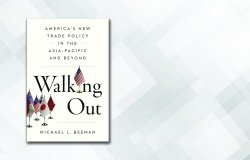Balanced Budget Proposal Tilts on Procedure
Watching the procedural peregrinations of the balanced budget constitutional amendment in the House was enough to make anyone a bit dizzy and wobbly.
The off-balancing act at least began on a level legislative plane. House Republican leaders pledged in their September 2010 campaign manifesto that, if returned to the majority, they would put government on “a path to balance the budget and pay down the debt.” That pledge was advanced by the debt limit deal in August that made a down payment on debt reduction by imposing statutory spending caps and required both chambers to vote on a balanced budget amendment.
Two versions of a balanced budget amendment were introduced on the opening day of this Congress by Rep. Bob Goodlatte (R-Va.). Designated as House Joint Resolution 1 and 2, they attracted 133 and 242 co-sponsors, respectively.
The main difference between the two was that H.J.Res. 1 required a balanced budget, unless waived by a three-fifths vote of each chamber, with spending not to exceed 20 percent of economic output (gross domestic product), unless waived by a two-thirds vote. Three-fifths votes would be required to increase taxes and to raise the debt ceiling. The more popular version, H.J.Res. 2, was nearly identical except only a majority vote would be required to raise taxes.
In June, the House Judiciary Committee reported H.J.Res. 1 with an amendment. The amended version limited outlays to 18 percent of GDP unless waived by a two-thirds vote and retained the three-fifths votes to waive the balanced budget requirement and to increase the debt limit. However, the amendment increased the threshold for raising taxes from a three-fifths to a two-thirds vote.
Before the balanced budget amendment was ready for the House floor, it underwent vetting in the GOP caucus, through a working group headed by Majority Whip Kevin McCarthy (Calif.) and by use of a multiple-choice survey.
The central question facing Republicans was whether they wanted a campaign issue or a constitutional amendment. The supermajority threshold to raise taxes was a major sticking point with otherwise sympathetic Democrats in the House. And Democratic votes would be needed to achieve the two-thirds threshold for constitutional amendments.
The upshot of these intense, intraparty deliberations was strong support for a compromise that required only a majority vote to raise taxes. The compromise also dropped the GDP-geared spending cap.
Notwithstanding majority support in the Republican Conference, 31 conservative organizations, including the Club for Growth, Americans for Tax Reform and various tea party affiliates, expressed opposition to the compromise in a Nov. 9 letter to Speaker John Boehner (R-Ohio).
This undercurrent of conservative opposition posed a serious challenge to the leadership: How do you pass the amendment given the multiplicity of alternatives which, if offered as substitutes, would require only a majority vote for adoption as amendments? (The two-thirds vote requirement for constitutional amendments applies only to final passage.)
The agreed-upon solution was to bring up the package under suspension of the rules — a process usually reserved for noncontroversial matters. Bills considered under suspension are debatable for 40 minutes, are not amendable and require a two-thirds vote for passage. Even the usual minority-party motion to recommit with instructions (offer a final amendment) is prohibited under suspension.
Republican leaders tried in late July to use the same suspension process to pass the debt limit deal, but the ploy failed when anticipated Democratic supporters did not materialize. Nevertheless, the leadership decided to roll the same dice on the balanced budget amendment, even though two Democratic leaders who supported an identical amendment in 1995 were whipping their Members in opposition this time.
The Rules Committee approved a special rule Nov. 15 that allowed H.J.Res. 2 (the unreported version) to be considered under suspension but extended debate time from 40 minutes to five hours. The special rule was silent on the existence of the compromise text. However, the substitute was posted on the Rules Committee’s website Nov. 10 and was clearly labeled: “Suspend the Rules and Pass the Joint Resolution, H.J.Res. 2, with an Amendment (The amendment consists of a substitute text).”
How could a substitute be offered if the suspension rule prohibits amendments? There is an exception: The Member calling up a bill under suspension may simultaneously submit an amendment at the desk, which is considered to be automatically adopted. Thus, following debate, the Speaker put the question as follows: “The question is on the motion … that the House suspend the rules and pass the joint resolution, H.J.Res. 2 as amended.”
The suspension route solved the leadership’s political problem of possible shenanigans on alternatives by barring all amendments and folding the compromise text under the single two-thirds vote on final passage. The procedure did not solve the other political problem: the possible defection of Democrats who previously voted for an identical balanced budget amendment in 1995 or who have subsequently co-sponsored it.
Eight of the remaining 11 Democratic supporters from 1995 voted “no” this time, and the amendment fell 23 votes short of two-thirds, with only 25 Democrats voting “aye.” That left Republicans with a campaign issue if not a victory.
Don Wolfensberger is a Congressional scholar at the Woodrow Wilson Center, a visiting scholar with the Bipartisan Policy Center, and former staff director of the House Rules Committee.
About the Author

Donald Wolfensberger
Former Director, the Congress Project, Wilson Center; Former Staff Director, House Rules Committee











